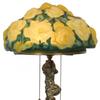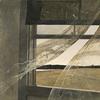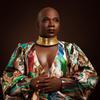AUGUST STRINDBERG’S INFERNO TO BE OFFERED IN CHRISTIE’S IMPRESSIONIST & MODERN ART EVENING SALE IN NEW YORK NOVEMBER 16
- NY, New York
- /
- October 24, 2016
New York – Christie’s will present Swedish artist August Strindberg’s Inferno (estimate: $3-5 million) in its upcoming Impressionist and Modern Art Evening Sale on November 16. Widely exhibited and published, Inferno has been in the collection of J.E. Safra since 1992, and marks the first time that any work by Strindberg has been offered at auction in New York since 1990. In advance of the sale, the painting will be unveiled at the CFHILL Art Space (Christie’s Partner) in Stockholm for a public exhibition from October 24-26, 2016.
Adrien Meyer, Christie’s International Director of Impressionist and Modern Art, comments: “Inferno strikes for its daringness and singular freedom. An avant-garde masterpiece through and through, this canvas implements the same philosophies revolutionized by Abstract Expressionist pioneers, Mark Rothko and Willem de Kooning, half a century later.”
Painted in 1901, the striking landscape depicts Strindberg’s conception of Inferno–Hell. The canvas is thickly painted as a field of light consuming darkness, spreading outward from the center of the canvas enveloping and overwhelming the light within. The effect draws the eye to the brilliant white radiance at lower right, the proverbial light at the end of this tunnel. Strindberg was especially attached to the present picture, which he retained for eight years.
In addition to his accomplished painting career, Strindberg also authored dozens of plays, novels, stories, poetry, autobiographies and articles on a range of diverse subjects. He studied metaphysical philosophy, para-physics, and occultism. Completed in 1897, Inferno was first the title of Strindberg’s most famous autobiographical tract. Based predominantly on actual experience, Inferno recounts the events that transpired during the artist’s Paris sojourn from late 1894, which followed the separation from his second wife, Frida Uhl. Living alone in Paris, without the prospect of theatrical success, Strindberg soon fell prey to hallucinations, delusions, paranoia, and depression, while his proclivity for alchemic research damaged his health.
At the end of 1896 Strindberg returned to Sweden where his fortune began to improve. He commenced a prolific campaign of playwriting, completing nearly a dozen dramatic works during the next several years. In 1900, his well-received plays filled the theaters in Stockholm, and he fell in love with Harriet Bosse, a gifted actress 27 years his junior. They married a year later, but within months, rising tensions and jealousy fomented a new inferno into which Strindberg rapidly descended, the tumult of his emotions, including thoughts of suicide, filling the pages of his Occult Diary. This dark but fruitful time in Strindberg’s career yielded his most prolific body of paintings, including the present canvas, a clear apogee of this period.










100x100_c.jpg)


